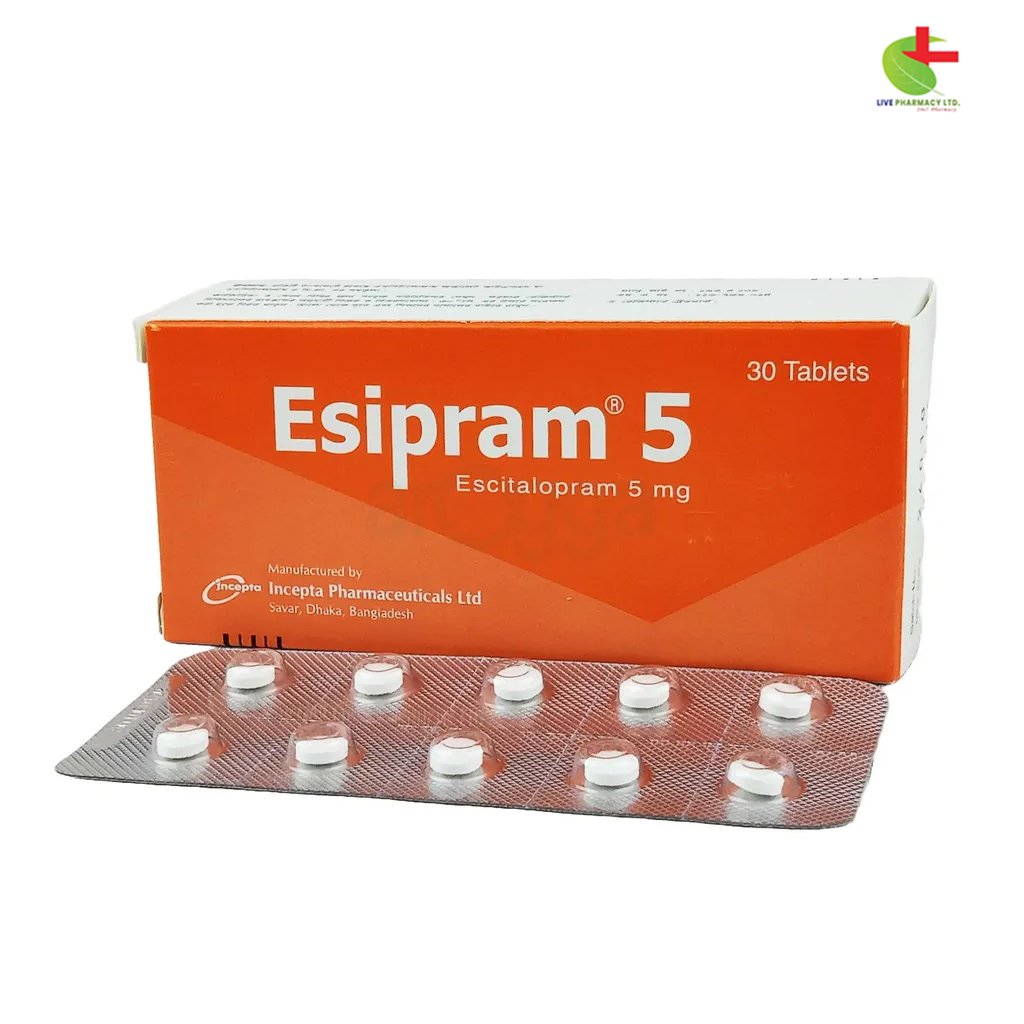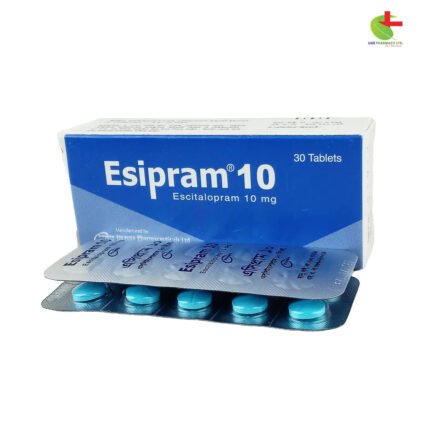Esipram 5
70.00৳ Strip
- Esipram is indicated for:
- Treatment of major depressive episodes
- Treatment of panic disorder (with or without agoraphobia)
- Treatment of social anxiety disorder (social phobia)
- Treatment of generalized anxiety disorder
- Treatment of obsessive-compulsive disorder
- Consult a healthcare professional for proper guidance on dosage and use.
 Brand
Brand
|
Incepta Pharmaceuticals Ltd |
|---|---|
 Generics
Generics
|
Escitalopram Oxalate |
 Type
Type
|
Tablet |
Indications for Use
Esipram is prescribed for:
- Treatment of major depressive episodes.
- Management of panic disorder, with or without agoraphobia.
- Treatment of social anxiety disorder (social phobia).
- Management of generalized anxiety disorder.
- Treatment of obsessive-compulsive disorder (OCD).
Always consult a registered healthcare professional before use.
Pharmacology
Escitalopram is an oral selective serotonin reuptake inhibitor (SSRI) and the S-enantiomer of citalopram, demonstrating over 100 times the potency in inhibiting serotonin (5-HT) reuptake compared to its R-enantiomer. It has minimal affinity for other receptors, including adrenergic, dopamine, histamine, muscarinic, and benzodiazepine receptors.
Dosage
- Major Depressive Episodes: Start with 10 mg once daily, increasing to a maximum of 20 mg as needed. Full therapeutic effects may take 2-4 weeks, with at least 6 months of treatment recommended post-response.
- Panic Disorder: Initiate at 5 mg for the first week, then increase to 10 mg daily, potentially rising to 20 mg based on response. Optimal results typically occur within 3 months.
- Social Anxiety Disorder: Start with 10 mg daily, with the option to adjust between 5 mg and 20 mg depending on response. A treatment duration of at least 12 weeks is advised for consolidating benefits.
- Generalized Anxiety Disorder: Begin with 10 mg once daily, adjustable to a maximum of 20 mg based on individual response.
- Obsessive-Compulsive Disorder: Start at 10 mg once daily, potentially increasing to 20 mg based on patient response. Long-term treatment is essential for symptom management.
Always follow the guidance of a registered healthcare professional.
Administration
Esipram should be taken once daily, either in the morning or evening, with or without food.
Drug Interactions
Escitalopram should not be started within 2 weeks of an MAOI and vice versa. Caution is needed with certain medications that can increase the risk of side effects.
Contraindications
Contraindicated in patients with hypersensitivity to Escitalopram or Citalopram, as well as those on MAOIs or pimozide.
Side Effects
Common side effects include gastrointestinal symptoms, headache, dizziness, and potential allergic reactions.
Pregnancy & Lactation
Use during pregnancy should only occur if the benefits outweigh risks. Escitalopram is excreted in breast milk; decisions on breastfeeding should consider potential risks to the infant.
Precautions & Warnings
Caution is warranted in patients with epilepsy, cardiac disease, diabetes, and those on medications that affect bleeding risks.
Use in Special Populations
- Elderly: Start at 5 mg daily, potentially increasing to 10 mg.
- Children & Adolescents: Not recommended under 18 years.
- Renal & Hepatic Impairment: Dose adjustments may be necessary based on function levels.
Overdose Effects
Symptoms of overdose may affect the CNS, gastrointestinal, and cardiovascular systems. There is no specific antidote; supportive care is essential.
Therapeutic Class
Esipram belongs to the class of SSRIs and related antidepressants.
Storage Conditions
Store below 30°C, protected from light and moisture. Keep out of reach of children.













Reviews
There are no reviews yet.